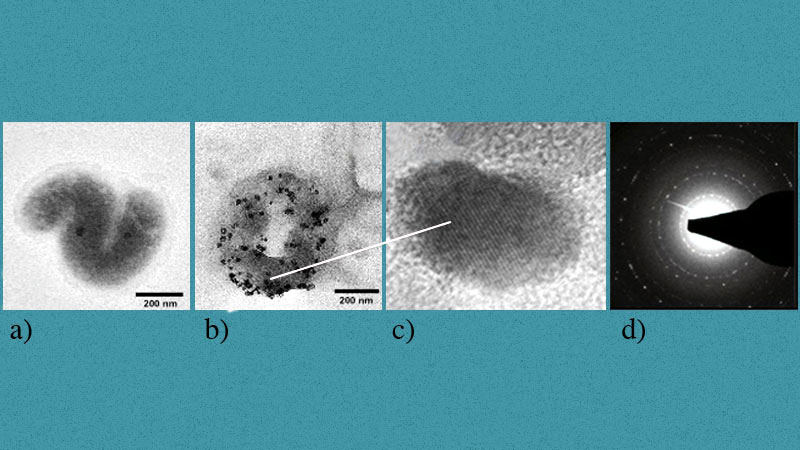Bacteria such as Leptospirillum ferrooxidans (a) grow on pyrite and break it down into nanoparticles, as shown in b) and with its crystal lattice in c).
Figure d) shows the corresponding electron diffraction pattern. The chemical energy of pyrite is used to fix carbon dioxide. Humans could try to use these skills of bacteria. Since I was motivated by biomimetic research, I focused on carbon dioxide fixation and biomass production by harmless bacteria. By using solar energy to produce the simple inorganic chemical energy of primitive bacteria that fix carbon dioxide, e.g. ferrous sulphide from ferrous sulphate, biomass production is much more efficient than that of conventional agriculture and does not require fertile soil (Refs. 34, 49, 348).
As part of a long-term strategy towards sustainability, I propose this futuristic artificial biomass technology. My basic research aimed to understand how the energy-rich metal sulphide food of these bacteria can be produced with solar energy (Ref. 271).
I was also interested in how these bacteria efficiently harvest the chemical energy produced (Refs. 307, 308, 373, 393) to sequester carbon dioxide and produce biomass.


 Deutsch
Deutsch Italiano
Italiano